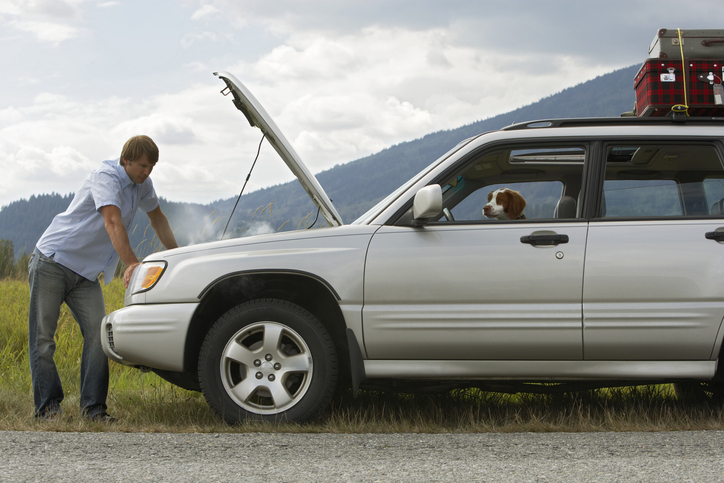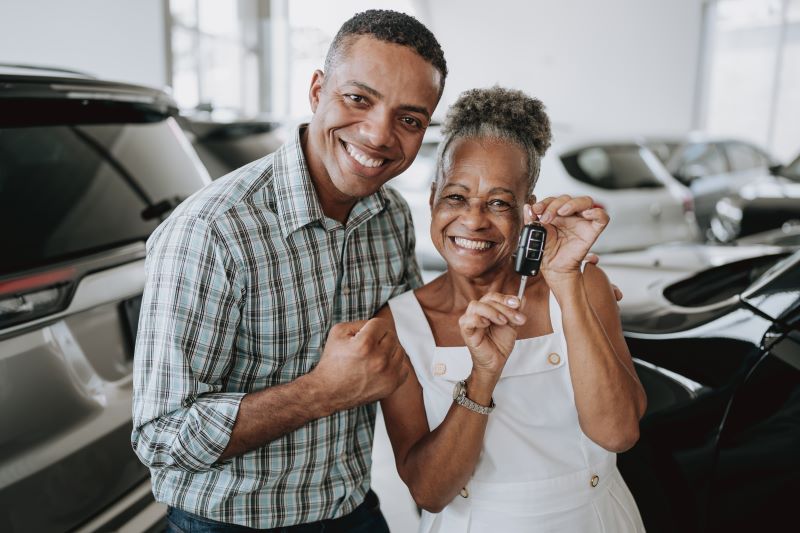When’s the last time you evaluated your car insurance coverage? When you buy a new car, it’s important to make sure it carries a full range protection, but you may be able to save money by reducing coverage as the vehicle ages. Here are some things to consider:
Optional vs. Required Coverage For Older Vehicles
Understanding what is mandatory and what is optional when building your insurance policy may help you save money in the long run.
What Does a Basic Auto Policy Consist Of?
Typically, a basic auto policy consists of bodily and property damage liability, which most states require. These coverages protects you when you injure someone in a car accident or damage their car or property. Each state sets the minimum level of coverage, but you can always opt for more to extend your protection.
Some states also have additional coverage requirements, some of which include:
- Personal injury protection, which provides reimbursement for medical expenses for injuries to you or your passengers.
- Underinsured or uninsured motorist coverage, which kicks in when a driver with little or no coverage causes injuries or property damage.
What Are Optional Auto Coverages?
For most drivers with an older vehicle, collision and comprehensive coverage can be considered optional.
- Collision pays for repairing or replacing your car no matter who is at fault.
- Comprehensive pays for losses not caused by collisions, such as fire, theft, vandalism, animal strikes and broken glass.
While these coverages work well for newer cars, and are usually required if you have a loan or lease on your vehicle, they may not make sense for older vehicles depending on your financial situation. If you own your car free and clear, you can decide whether cost of collision and comprehensive is worthwhile.
The Right Amount of Coverage for Your Older Car
If you buy collision and comprehensive coverage for a car that is at least 10 years old and you’re able to cover any repair costs out of pocket, you may be paying too much for car insurance. Repairing older cars typically is less costly than newer vehicles because they use less advanced technology. Replacement parts for older cars typically are less costly also. However, it all depends on your specific vehicle.
💡
Tip
Weigh what you are paying in premiums against what you are likely to get back from your insurance if your car is damaged, said Carole Walker, executive director of the Rocky Mountain Insurance Information Association.
Even still, many consumers choose to err on the side of caution by keeping collision and comprehensive coverage for older cars, said Bach. Ultimately, the less car insurance coverage you have, the more financial risk you take on if you ever need assistance on the road.

Cost vs. Benefit Analysis
Before cutting back on coverage for your older car, you should take time to figure out how much it would cost to repair or replace it if you had to cover the amount out of pocket. It may make sense for you to keep as much coverage for your older car as possible, depending on your budget or if your vehicle has maintained a high resale value.
You can research how much your car is worth by contacting local auto dealers or consulting auto buyer guides like Kelley Blue Book
Determine Whether Your Older Car is a Classic
Most cars lose value as they age, but in some cases older cars attain a greater value by achieving classic car status. When that happens, drivers often can find discounts by buying classic car insurance.
Classic cars generally must be at least 25 years old. You typically can find the best price on classic car insurance if you work with an agent who specializes in such policies, said Bach.
Often, insurance companies give classic car owners a price break because (typically) classic cars are:
- Driven less often than most vehicles
- Often pampered, and saved for special occasions
- Less likely to be damaged or totaled in accidents
- Kept in garages, making them less likely to be stolen
Before you buy insurance for a classic car, you may wish to have its value appraised so your policy will accurately reflect its worth. This is especially important if you have made improvements that have increased its value. Given the volatility of the car market, it’s important to have your vehicle appraised annually to ensure you’re getting an accurate value.
If you decide to store your car during harsh winter months and do not drive it for at least 30 days, you can save money by suspending your coverage, depending on where you live. Just make sure that the car is roadworthy before returning it to the highway in the spring.
Making an Informed Choice
It’s a wise choice to periodically reexamine your level of car insurance coverage to make sure you have the protection you need at a price that fits your budget. At The Hartford, we’re here to help at 800-423-6789.
Remember: While selecting a high deductible can reduce your car insurance rates, be sure to have the funds on hand in case you need to file a policy claim, since you’ll have to pay for any repairs or replacements out of pocket.







Many thanks, I needed this information before renewing my auto policy. Will go back and renew my coverage.
This makes sense but what if we get into an accident that is our fault? My car is 17 years old and probably worth not more that $2K at this point. I’m carrying full coverage.
MY CAR IS A 2008 PONTIAC G6. IT HAS LESS THAN 11,000 MILES ON IT. IT IS USED LESS THAN 50 TIMES A YEAR. I HAVE NOT HAD AN ACCIDENT IN ABOUT 18 YEARS. YOU CHARGE ME OVER $1,400 A YEAR. I SHOULD NOT BE PAYING FOR OTHERS ACCIDENTS.
INSURANCE SHOULD GO DOWN EVERY YEAR YOU DO NOT HAVE AN ACCIDENT AND AS YOU CAR GETS OLDER. NOT BECAUSE YOU REDUCE YOUR COVERAGE.
Question I have is I have 2 older cars that don’t fit into classic cars but old enough and special enough that I feel full coverage is necessary. One is a 04 Corvette and the other is a 04 Thunderbird. Both have less than 30 K on them. Value would be more to replace with similar than actual BB value. Thoughts or suggestions on insuring these vehicles.
I have dropped comprehensive and collision coverage on my 2005 Honda Pilot. When traveling with friends we like to share the driving.
Is there a problem with me doing part of the driving of a friend’s vehicle when I do not have the coverage on my own vehicle?
My insurance is with The Hartford
Hi Gail, please call our Customer Service Department at 877-896-9320 and one of our representatives can gladly look into this for you. Thank you!
I am excited to read the post and happy that you have stated genuinely good information in this blog. Hope more good things will come in future as well. Information stated in points is particularly easy to understand and it seems that it comes from valid sources. Thanks for this blog and looking forward to similar posts in the future.
Thanks for your feedback, Giselle! We hope to hear from you again soon.
Do Car Insurance Check Credit?
Hi Jeffrey, great question! Insurance companies check your credit score when you’re getting a quote to calculate your insurance risk. If you are shopping for auto insurance, the insurance agent can provide you with more detail on how this process works and it is required.
I would like to discuss reviewing our car coverage.
Hi Pamela, if you call our Customer Service Center at 1-800-423-6789, one of our representatives will be happy to review your auto coverage with you. Thank you!